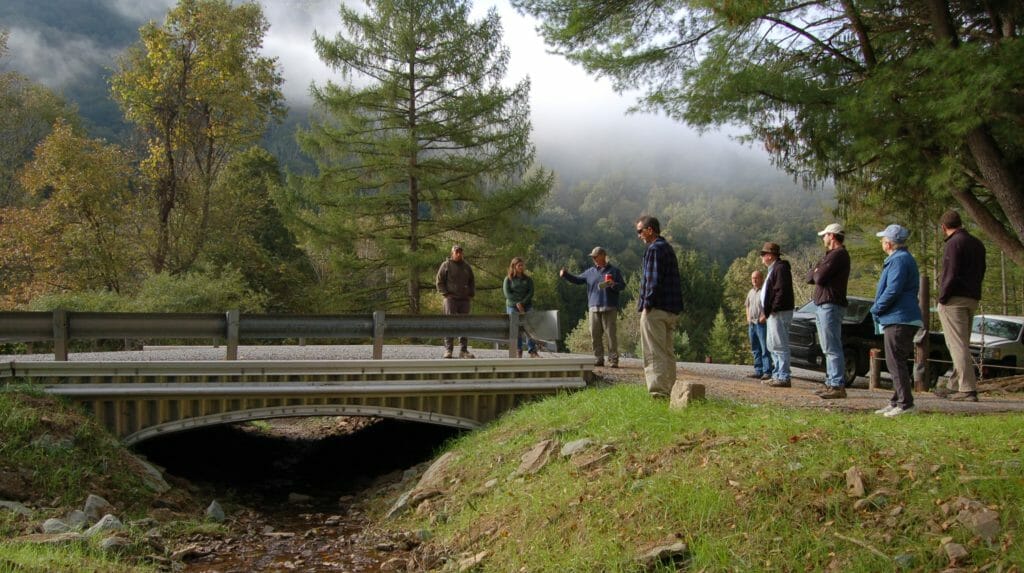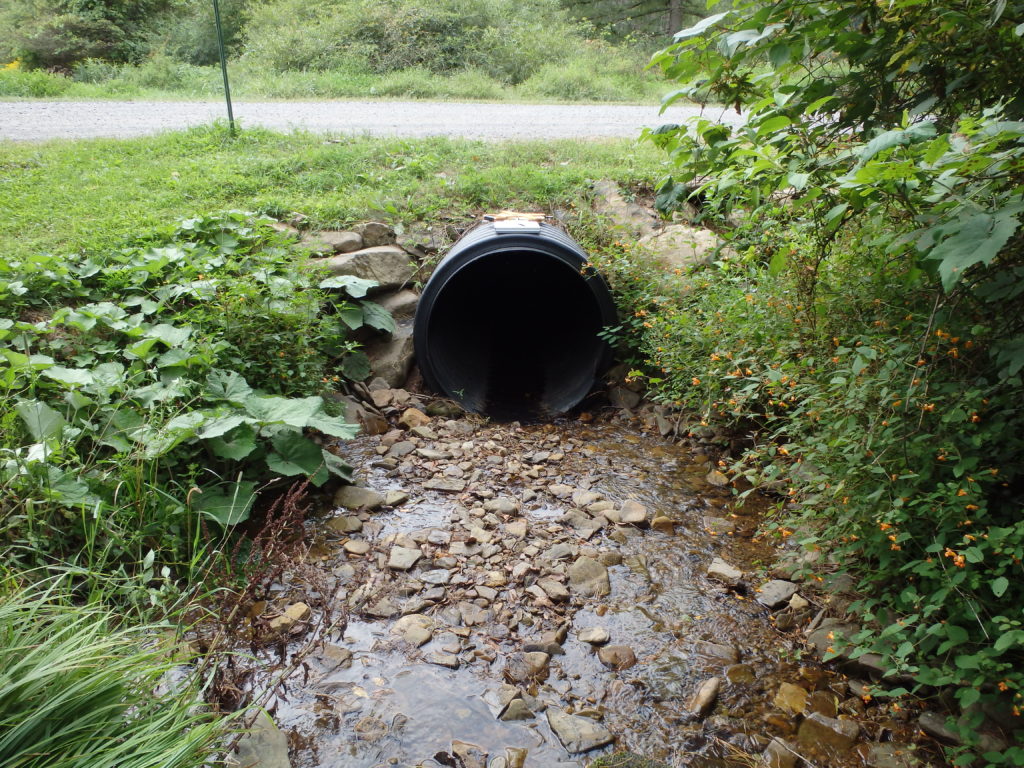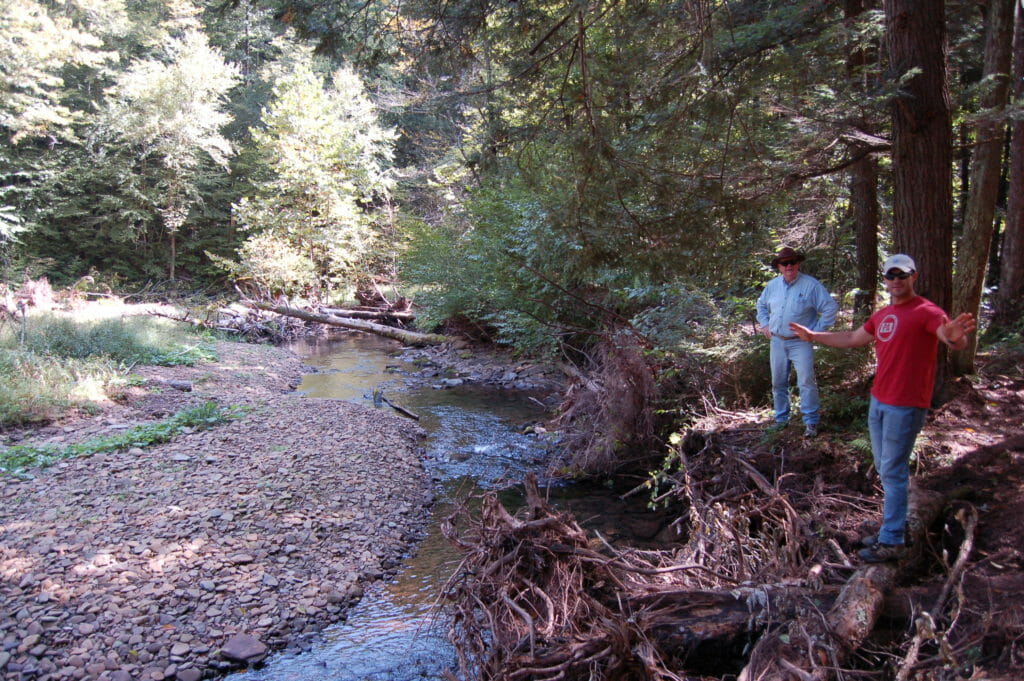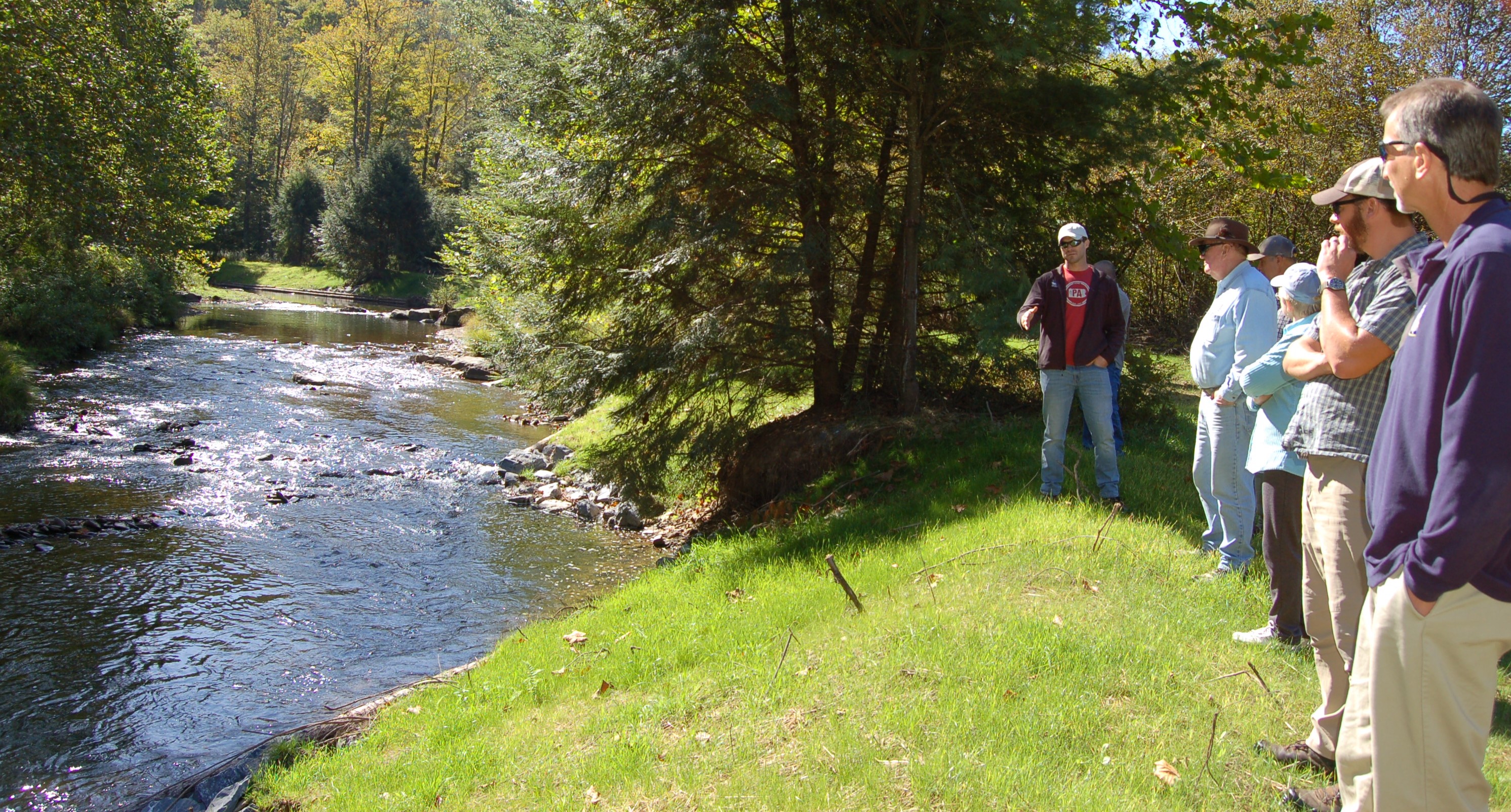By Amy Wolfe
It’s hard to believe that just over 20 years ago I started working with Trout Unlimited in the Kettle Creek watershed in northcentral Pennsylvania.
Back then I was hired as the Coordinator for TU’s third Home Rivers Initiative. Fast forward a couple decades and now I enjoy working with many of TU’s incredibly talented and dedicated staff – and our multitude of equally committed partners – across the Northeast region of the United States spanning from Pennsylvania and New Jersey up through New England.
But, one of the most rewarding aspects of my job (admittedly a little selfish, too) is that I still get to be involved with projects in the Kettle Creek (pictured above) watershed, back where it all started both for me and our now flourishing Pennsylvania Coldwater Habitat Program.
Over the years, we have continued to partner with the Kettle Creek Watershed Association. Together, we worked relentlessly to address abandoned coal mine pollution in the very lower section of the watershed, most notably in Twomile Run. Nine passive treatment systems later, we successfully restored and reconnected 6 miles of brook trout streams in the upper and middle sections of Twomile.
Unfortunately, we haven’t been able to continue our remediation work in the lower section of the watershed known as Huling Branch. More than four years ago, the Pennsylvania Department of Environmental Protection’s Bureau of Abandoned Mine Reclamation completed a massive land reclamation project in Huling Branch. Despite the hundreds of thousands of tons of alkaline material added to the site, there have been no meaningful water quality improvements – the stream is still dead.
It’s no secret this was a difficult site to address. But DEP failed to follow TU’s recommendations, based on years of intensive study by multiple agencies and experts using the best science available, to carefully target where and how the alkaline material should be added. It’s a long, frustrating story and it’s doubtful if there will ever be a feasible opportunity to “fix” this site and restore the lower reach of Twomile Run to its confluence with Kettle Creek.
Nevertheless, our efforts to improve and reconnect coldwater habitat in the upper and middle portions of the Kettle Creek watershed remain alive and well.

Alongside the Kettle Creek Watershed Association, we continue to chip away at projects identified in the original watershed assessments and conservation plans that were completed at the start of this Home Rivers Initiative, as well as the more recent road-stream crossing inventory we conducted just a few years ago. This past summer was particularly busy as we replaced a culvert, installed fish habitat structures, and added large wood at five different sites.

The culvert replacement was located on Gravel Lick Run, a small brook trout tributary to Cross Fork Creek. The original 36-inch pipe was not only a complete barrier to fish passage, it would also frequently overtop and cause local flooding and damage to the road. The pipe was replaced with a 16.5-foot bottomless arch structure that now provides unimpeded access both upstream and downstream for fish and other aquatic organisms. Plus, this new culvert is also highly resilient to flooding and should not require much, if any maintenance by the local township for decades to come.
The four habitat projects completed this summer targeted severely eroding streambanks, lack of instream habitat diversity, and streamflow diversion and channel damage caused by several previous storm events. Over 66,000 pounds of sediment pollution (annual rate) was eliminated by installing approximately 90 habitat structures, including large wood addition, on 1.5 stream miles on two sites on the mainstem of Kettle Creek and two sites on Hammersley Fork, a large tributary to Kettle Creek.

Last week, TU stream restoration specialists Phil Thomas and Shaun McAdams, as well as habitat manager Jake Tomlinson and I provided a tour of these projects to our partners, landowners, and other stakeholders. While it often takes years of planning to design, permit, and fundraise for these projects, it’s always gratifying to take time to celebrate the final projects with everyone and spark enthusiasm for the next projects. So stay tuned – we’re not done yet with our work “in the Kettle.”
Amy Wolfe is the Northeast Coldwater Habitat Program Director for Trout Unlimited. She is based out of Pennsylvania.



